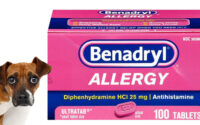Hanging tongue syndrome in dogs
Dogs are known for their playful licks and panting smiles, with their little tongues often seen peeking out as they catch their breath after a vigorous play session. However, for some dogs, a constantly protruding tongue is not a sign of relaxation or happiness, but a symptom of a condition known as Hanging Tongue Syndrome (HTS). This lesser-known ailment can lead to serious health complications if left untreated. In this article, we delve into the world of Hanging Tongue Syndrome, exploring its causes, symptoms, diagnosis, treatment options, and preventative measures to ensure the well-being of our beloved canine companions.
Understanding Hanging Tongue Syndrome
Table of Contents

Hanging Tongue Syndrome is a condition in which a dog is unable to retract its tongue, leading to constant exposure outside of the mouth. While it may appear benign or even endearing at first glance, HTS can cause significant discomfort and health issues for affected dogs. This condition can be either congenital, meaning the dog was born with it, or acquired due to various factors that damage the tongue or its neuromuscular control. Dogs with HTS often struggle to keep their tongue moist, which is vital for their overall health, as it can lead to drying, cracking, and infections.
Causes of Canine Tongue Protrusion

The causes of HTS can range from neurological disorders to physical trauma. Here are several factors that may lead to this condition:
- Neurological Disorders: Conditions such as nerve damage or paralysis can affect the tongue’s muscular control.
- Trauma: Injuries to the face or jaw can impair the tongue’s movement.
- Congenital Abnormalities: Some dogs are born with conditions that prevent the tongue from staying inside the mouth.
- Dental Issues: Severe dental disease or loss of teeth can result in a lack of support for the tongue.
- Muscular Disorders: Diseases affecting the muscles of the tongue can hinder its proper functioning.
- Environmental Factors: Extreme cold can cause frostbite to the tongue, leading to HTS.
Signs Your Dog May Have HTS

It is important to recognize the symptoms of HTS early on to prevent further complications. Some of the signs that a dog might be suffering from this condition include:
- The tongue continuously hangs out of the mouth, even when the dog is at rest.
- Dryness or discoloration of the exposed tongue.
- Difficulty in eating or drinking.
- Bad breath or drooling more than usual.
- Signs of discomfort or pain around the mouth area.
- Changes in behavior, such as reluctance to play or decreased interaction.
Diagnosing Hanging Tongue Syndrome

Diagnosis of HTS begins with a thorough veterinary examination to rule out other causes of tongue protrusion. The veterinarian will review the dog’s medical history, perform a physical examination, and may order tests such as X-rays or a neurological evaluation to determine the underlying cause. Identifying whether HTS is congenital or acquired is crucial for tailoring the appropriate treatment plan.
Treatment Options for Affected Dogs

Treatment for Hanging Tongue Syndrome varies depending on the cause and severity of the condition. Here are some interventions that may be recommended:
- Moisturizing the Tongue: Regular application of veterinarian-approved moisturizers can prevent drying and cracking.
- Dental Care: Addressing any dental issues that contribute to HTS can sometimes resolve the problem.
- Surgery: In some cases, surgical intervention might be necessary to correct anatomical abnormalities or remove damaged tissue.
- Medication: If an underlying neurological disorder is present, medications may be prescribed to manage symptoms.
- Supportive Care: For irreversible cases, supportive measures like special feeding techniques and protection from extreme weather are important.
- Physical Therapy: Rehabilitative exercises may help improve muscular control in some dogs.
Preventing Complications from HTS

Even with treatment, dogs with Hanging Tongue Syndrome may face various health challenges. Prevention of secondary complications is a key aspect of managing HTS:
- Ensure the dog’s tongue is kept moist to prevent cracks and infections.
- Regular check-ups with the veterinarian to monitor the condition.
- Provide a stress-free environment since stress can exacerbate symptoms.
- A well-balanced diet and proper hydration to maintain overall health.
- Keeping the dog indoors during extreme weather conditions to protect the tongue.
- Utilizing dog-safe sunblock on the exposed tongue to prevent sunburn when outdoors.
Comparison Table: Congenital vs. Acquired HTS
| Feature | Congenital HTS | Acquired HTS |
|---|---|---|
| Onset | Present at birth | Develops later in life |
| Underlying Cause | Genetic/Hereditary | Trauma/Disease |
| Treatment | Supportive Care | Address primary cause |
| Prognosis | Varies | Often favorable |
| Surgical Correction | Sometimes possible | Depends on the cause |
| Need for Ongoing Care | Often required | May be temporary |
Hanging Tongue Syndrome is a condition that affects a small but significant portion of the canine population. While it may seem like a mere cosmetic issue, it can pose serious threats to a dog’s health and quality of life. By understanding the causes, recognizing the symptoms, and seeking prompt veterinary care, dog owners can effectively manage HTS and minimize its impact. With the proper treatment and preventative measures, dogs with Hanging Tongue Syndrome can still lead happy, fulfilling lives.

